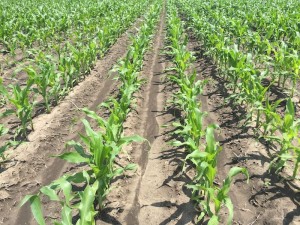 If one were to make a list of the worst conditions for corn production cold, wet and cloudy would certainly be at the top. It is near to impossible to bring any growing organism to maturity without the proper environment.
If one were to make a list of the worst conditions for corn production cold, wet and cloudy would certainly be at the top. It is near to impossible to bring any growing organism to maturity without the proper environment.
The last month has brought many adverse conditions to our own door steps. We are seeing stunted corn, injured beans and even diseases increasing in wheat. So, what is our response? Well, we need to throw product at it, right? Maybe, but let us arm ourselves with a little knowledge first.
How much do we know and understand about Growing Degree Days? GDDs (Growing Degree Days) are a measure of heat accumulation which is used to predict plant development. By using this tool we are able to accurately predict when various cultivars will flower and arrive at maturity. In other words, the development rate of a plant depends largely on the temperature of the air. When a crop does not receive adequate heat units it will be noticeably stunted and may even appear to be sick. And if it is struggling above the ground (visibly) you can rest assured that it is not properly developing below the ground either.
What does this mean? It may be the case that underdeveloped roots have not ventured out to gather your early season applications and therefore to add more N may indeed be unnecessary. How well would it do to put more food in front of a sick man who refuses or is unable to eat? The bottom line is that heat and sunshine may be the best prescription for our struggling corn crop.
 BigYield High Yield Soybeans, High Yield Corn, and High Yield Wheat
BigYield High Yield Soybeans, High Yield Corn, and High Yield Wheat



